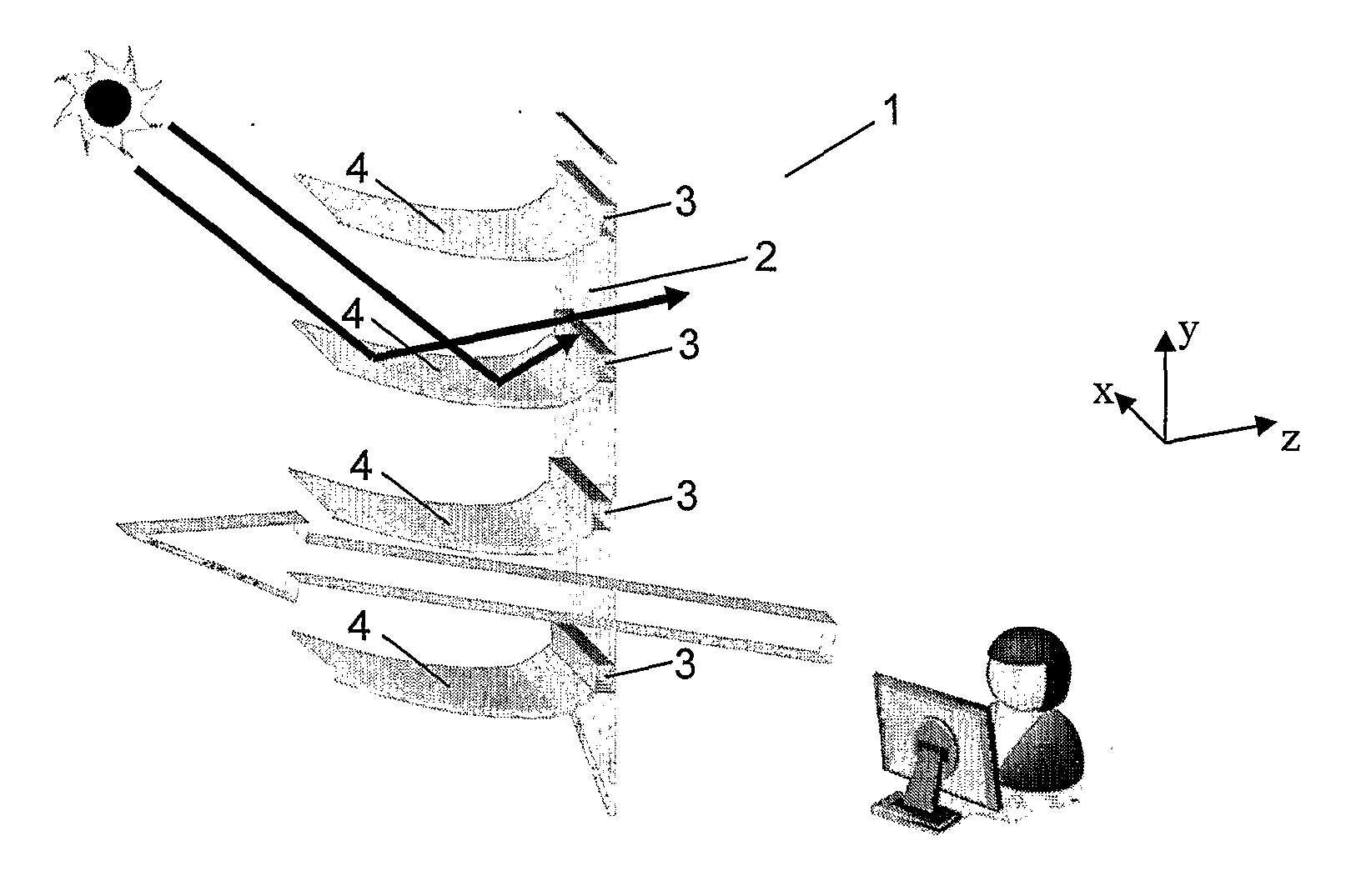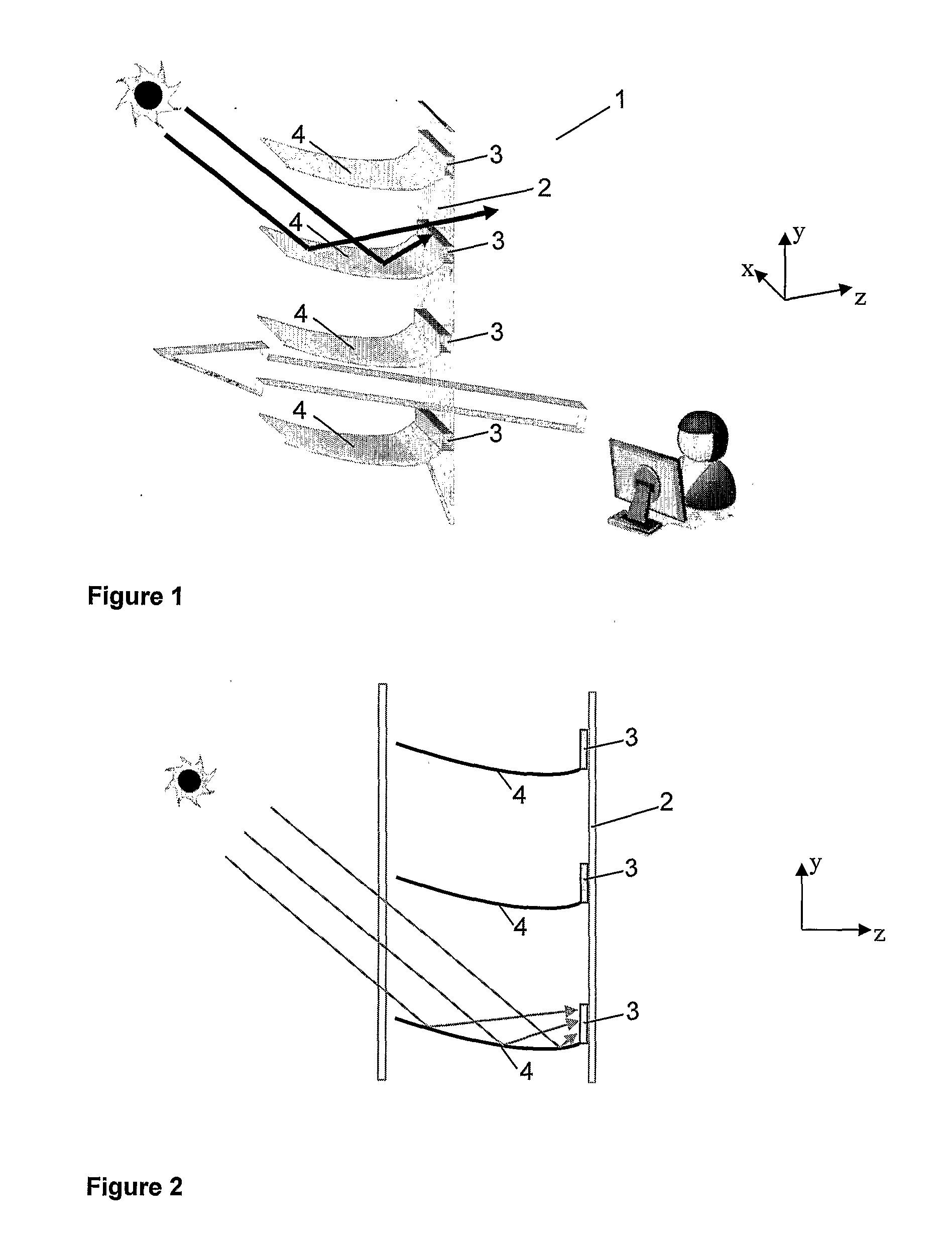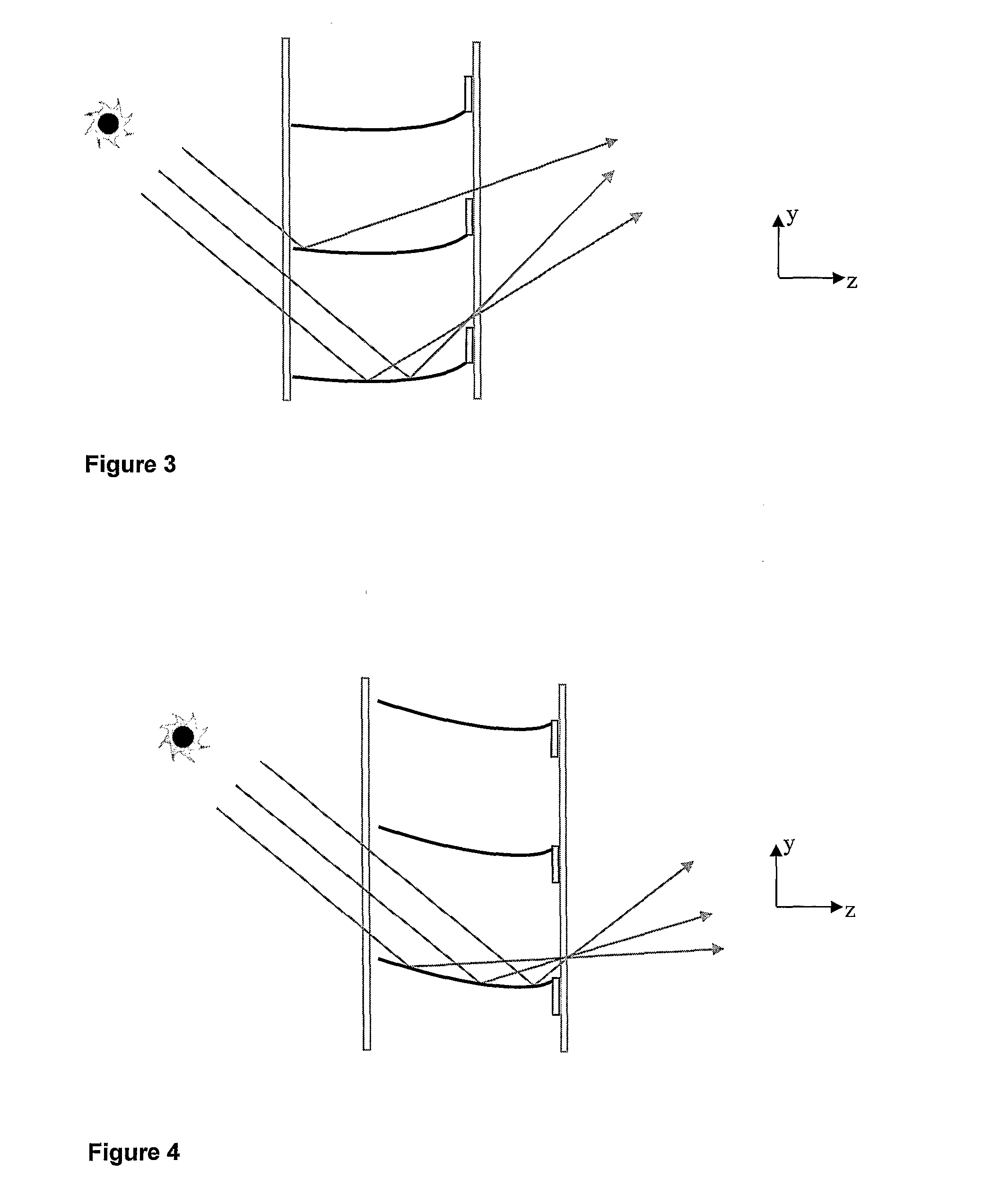Fenestration system with solar cells
a technology of solar cells and fenestration systems, which is applied in the direction of photovoltaic supports, special door/window arrangements, door/window protective devices, etc., can solve the problems of reducing the interior daylight quality and the potential for electric lighting energy savings, reducing the daylight utilization rate, and not exploiting the full potential for energy, so as to improve daylight utilization rate, save energy, and save energy.
- Summary
- Abstract
- Description
- Claims
- Application Information
AI Technical Summary
Benefits of technology
Problems solved by technology
Method used
Image
Examples
Embodiment Construction
[0050]Example embodiments of the fenestration system will now be explained with reference to the drawings. The same reference numerals indicate the same elements throughout all the drawings.
[0051]An embodiment of the new fenestration system 1 is shown in FIG. 1. The fenestration system comprises daylight redirecting blinds 4 and a stripe pattern of solar cells 3 attached to a window pane 2. As may be seen from FIG. 1, direct sunlight is concentrated onto the stripe pattern of solar cells by the redirecting blinds, but at the same time direct sunlight (and / or diffuse daylight) is redirected by the blinds through the window pane for improved daylight distribution within an interior space, e.g. inside a building. At the same time occupants inside the building will have good viewing conditions out of the window without being exposed to glare from direct sunlight or glare from redirected sunlight (provided that the fenestration system is located above eye height).
[0052]Although FIG. 1 sh...
PUM
 Login to View More
Login to View More Abstract
Description
Claims
Application Information
 Login to View More
Login to View More - R&D
- Intellectual Property
- Life Sciences
- Materials
- Tech Scout
- Unparalleled Data Quality
- Higher Quality Content
- 60% Fewer Hallucinations
Browse by: Latest US Patents, China's latest patents, Technical Efficacy Thesaurus, Application Domain, Technology Topic, Popular Technical Reports.
© 2025 PatSnap. All rights reserved.Legal|Privacy policy|Modern Slavery Act Transparency Statement|Sitemap|About US| Contact US: help@patsnap.com



